At CES this week, marketers were buzzing about the potential of virtual assistants.
“Marketing is much more about providing a great experience or a product that makes a consumer’s life easier and one of the most interesting developments for our business is the virtual assistant,” said Kristin Lemkau, CMO of J.P. Morgan Chase.
Most of the attention at CES was on Alexa, the voice-activated assistant for Amazon’s Echo. Alexa is being described as a potential operating system for the Internet of Things, in competition with Google Assistant and Apple’s Siri. LG announced a smart fridge partnership with Alexa that will let consumers buy groceries via voice. A flurry of Alexa-enabled applications are on the way, with one pundit predicting a launch of 700 new applications in the next week alone.
This new virtual assistant ecosystem creates tremendous potential for brands. Commerce is at the heart of the virtual assistant. A 6-year old in Dallas had a conversation with Alexa over the holidays that resulted in a delivery of a $170 doll house and 4 pounds of cookies. Amazon is reportedly considering push notifications for Alexa, so Alexa could soon start speaking before being prompted. And with all of the data available from the Internet of Things, Amazon will soon know a lot more about individual consumers than previously possible.
From a marketing perspective, this can create more relevant engagement than ever. But from a consumer perspective, this has the potential to be really creepy.
The Wynn Las Vegas recently announced that it’s adding Alexa to all 4,748 hotel rooms as a virtual assistant that can turn on lights, change the temperature, or close the shades. Virtual assistants are always listening. Particularly in a city built on the premise that “what happens in Vegas, stays in Vegas,” it will be interesting to see how well consumers accept a little surveillance in return for convenience.
There will be friction in how virtual assistants evolve to balance utility with commerce over time. As brands experiment with the potential, I think it’s really important to emphasis utility first. Marketers should first question how brands can use this technology to be more useful to people, rather than simply how to sell more.
I’d love to hear your thoughts.
Here are a few more cartoons I’ve drawn on this theme over the years.
“The Internet of Things” January 20, 2014
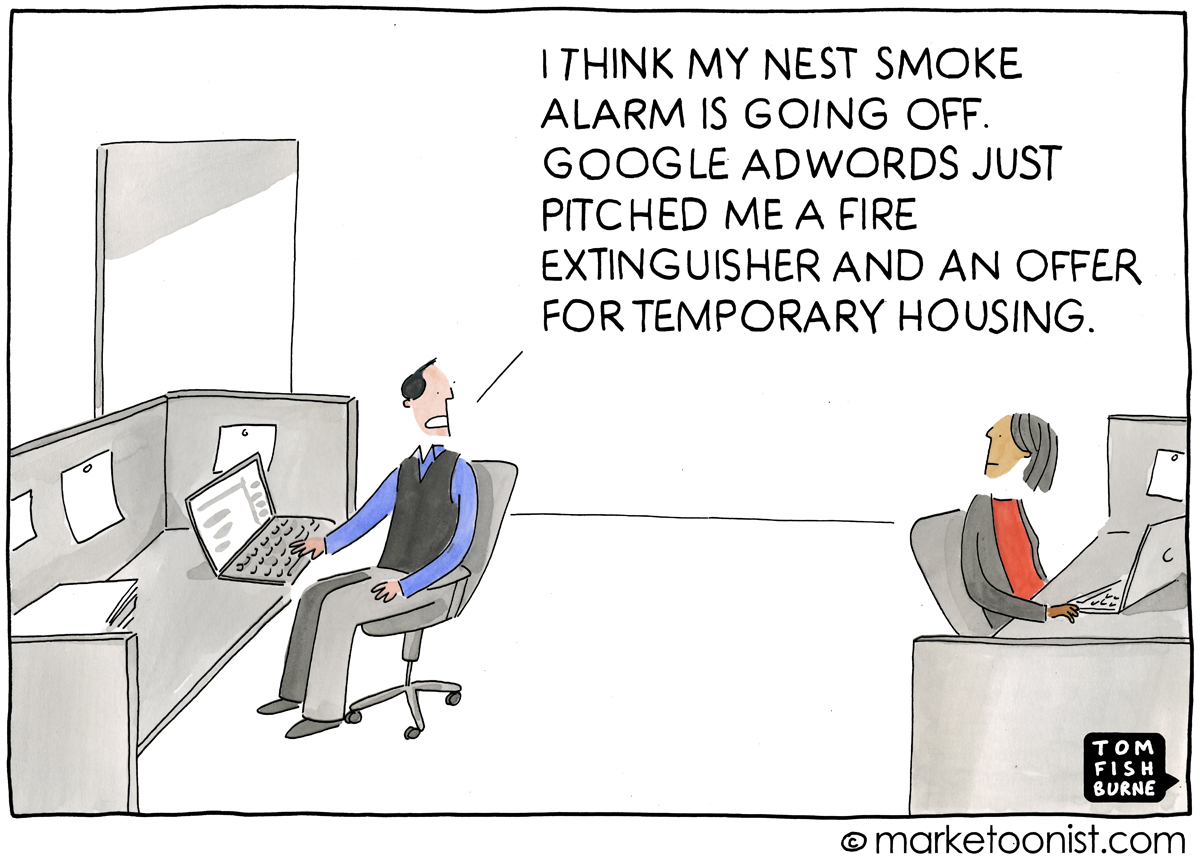
“Marketing with Personal Data” May 11, 2014
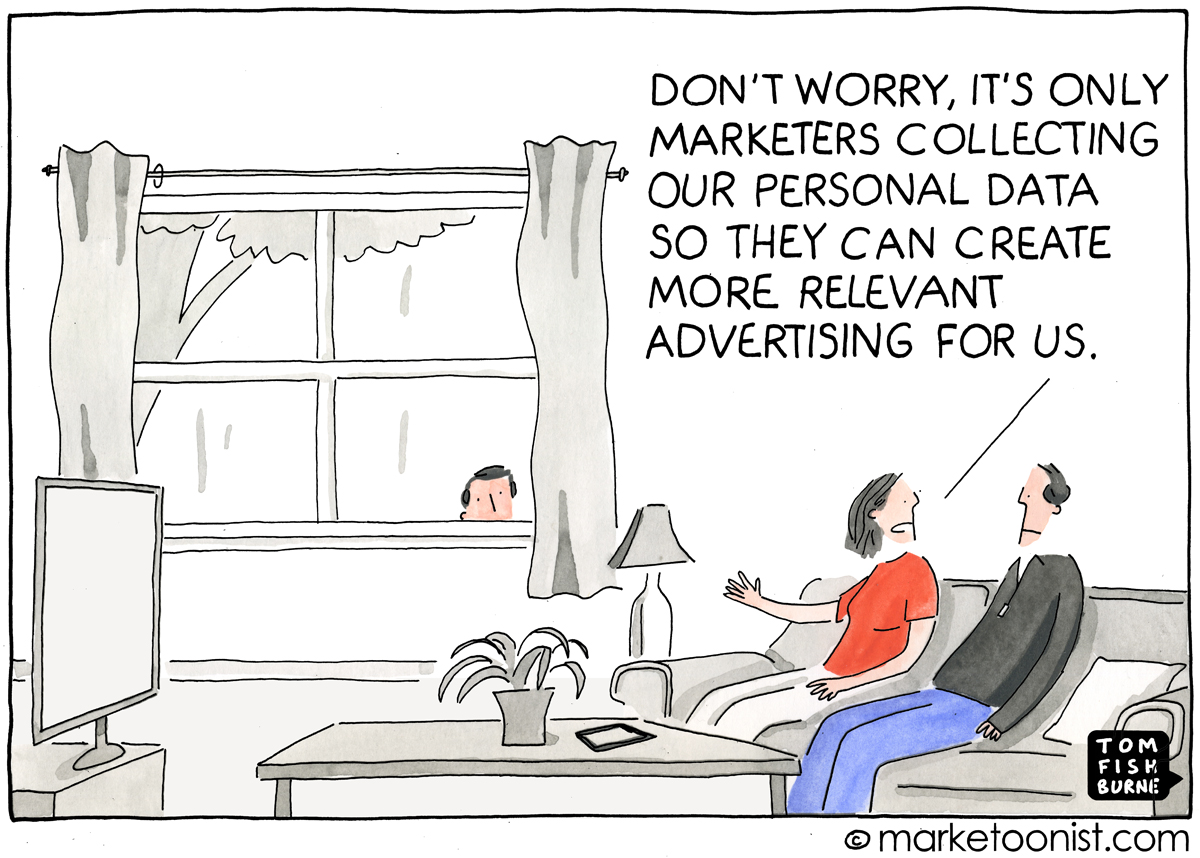
“The Future of Advertising” August 18, 2013
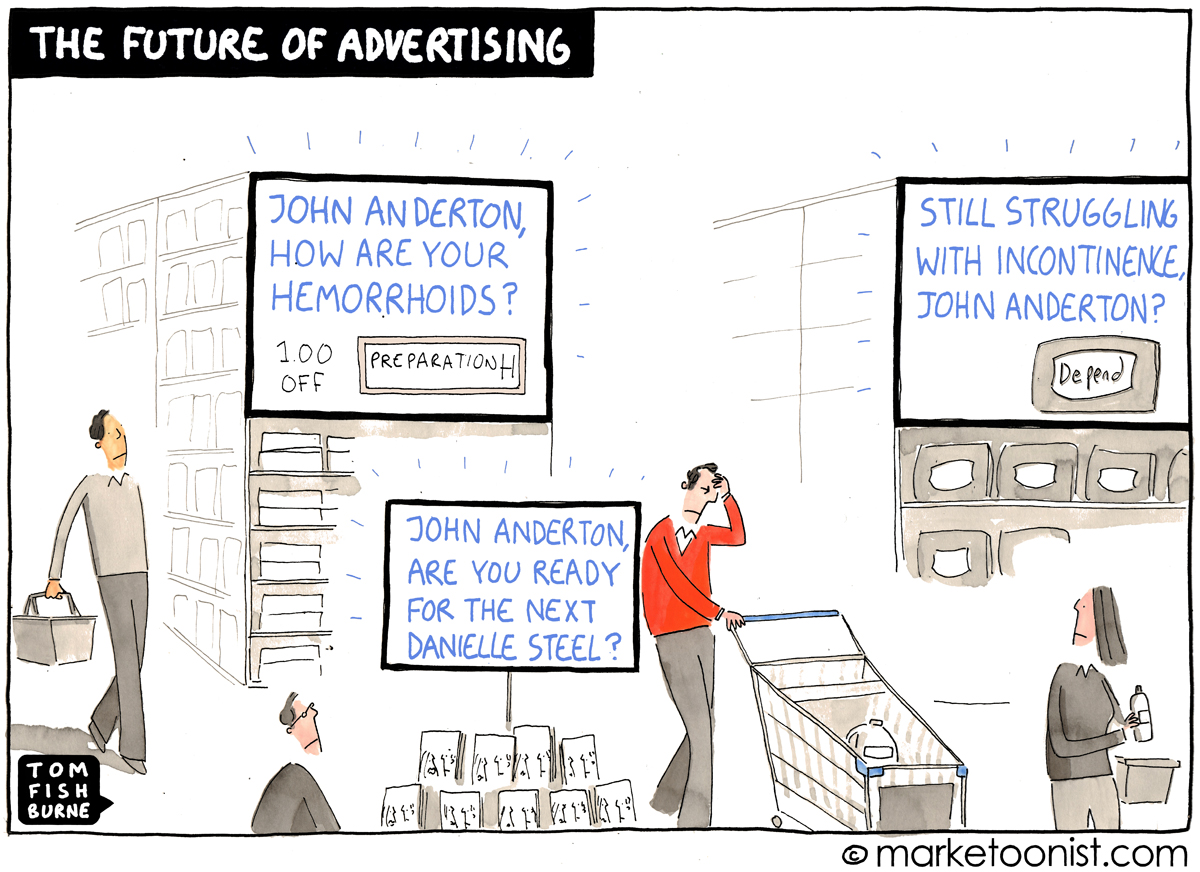
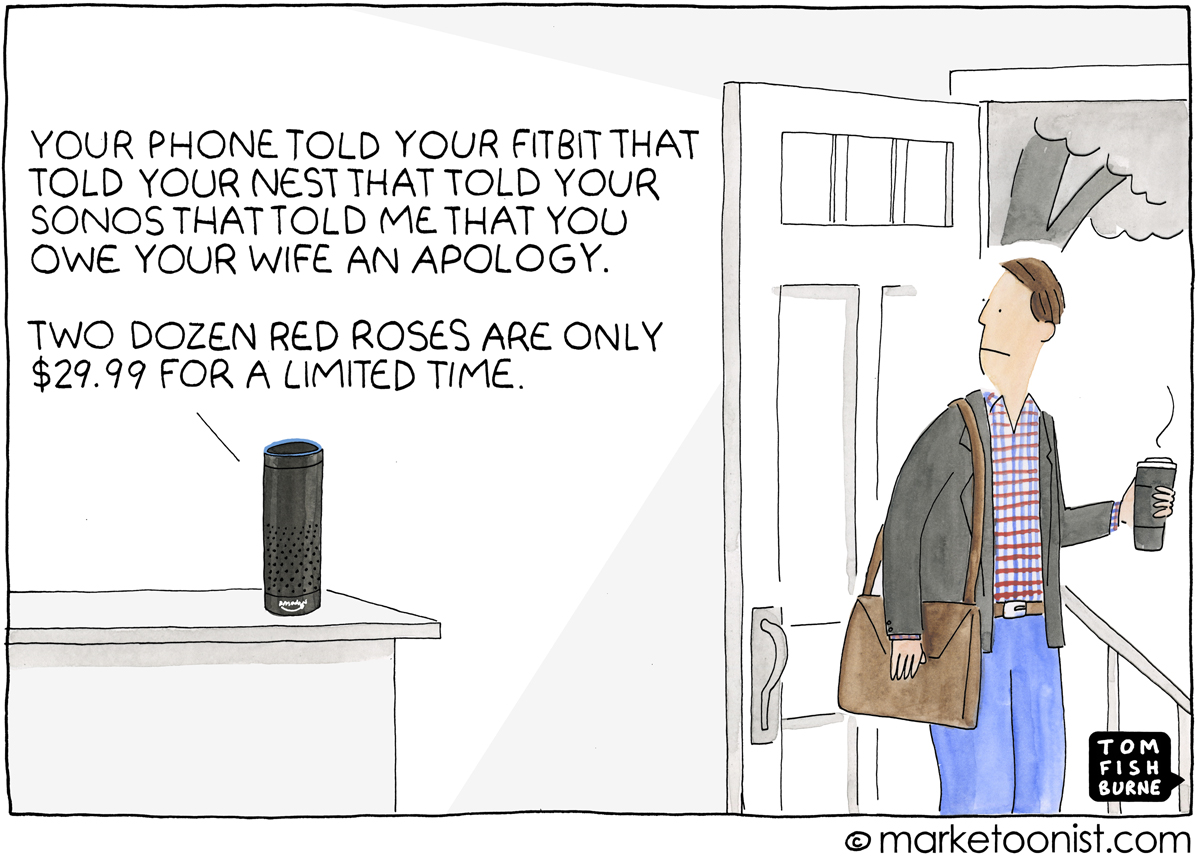
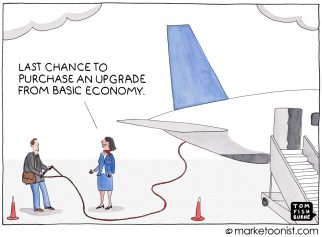
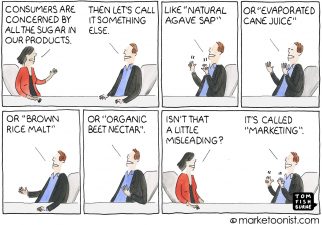
Gillian says
Perhaps if you could prioritize where you (the consumer) wanted “help”?
For example: if my main concern was health and safety, Alexa could be programmed only to offer help in those categories for the home.
I agree it feels a bit creepy…definitely prioritize utility over selling more superfluous stuff.
brad says
My first thought on the Wynn Las Vegas information was that Las Vegas will need to change the slogan from “What happens in Vegas stays in Vegas and at any location where the Amazon servers are located….”
It will be interesting to see how people react when they finally realize the impact of technology that is listening to everything. I was told that because of negative feedback Microsoft adjusted how XBox Kinect worked to indicate that it would not store what it was hearing. I don’t see this working for the PDAs, since storing what is heard for analysis is core to what seems the business model.
Carlos Pacheco says
Reading the story over the weekend of that doll house made it pretty obvious for me how marketers and brands will ‘abuse’ this opportunity and its caused me to question the need of having such a system in my house. As an early adopter I want one, as an older demographic I can afford to remove as much marketing from my life.
Richard Warland says
Two thoughts Tom –
1. The privacy lobby will have a field day with this!
2. In my experience, every new piece of marketing technology is ruined for the well-meaning amongst us by the marketing cowboys who use it inappropriately. Alexa will be no different!
Long John Logo says
Virtual assistants for most people probably wont be a thing. I’m excited to see how they will be incorporated into societies daily use. Or are they the “segway” hype that gets pumped so hard at ces every year.